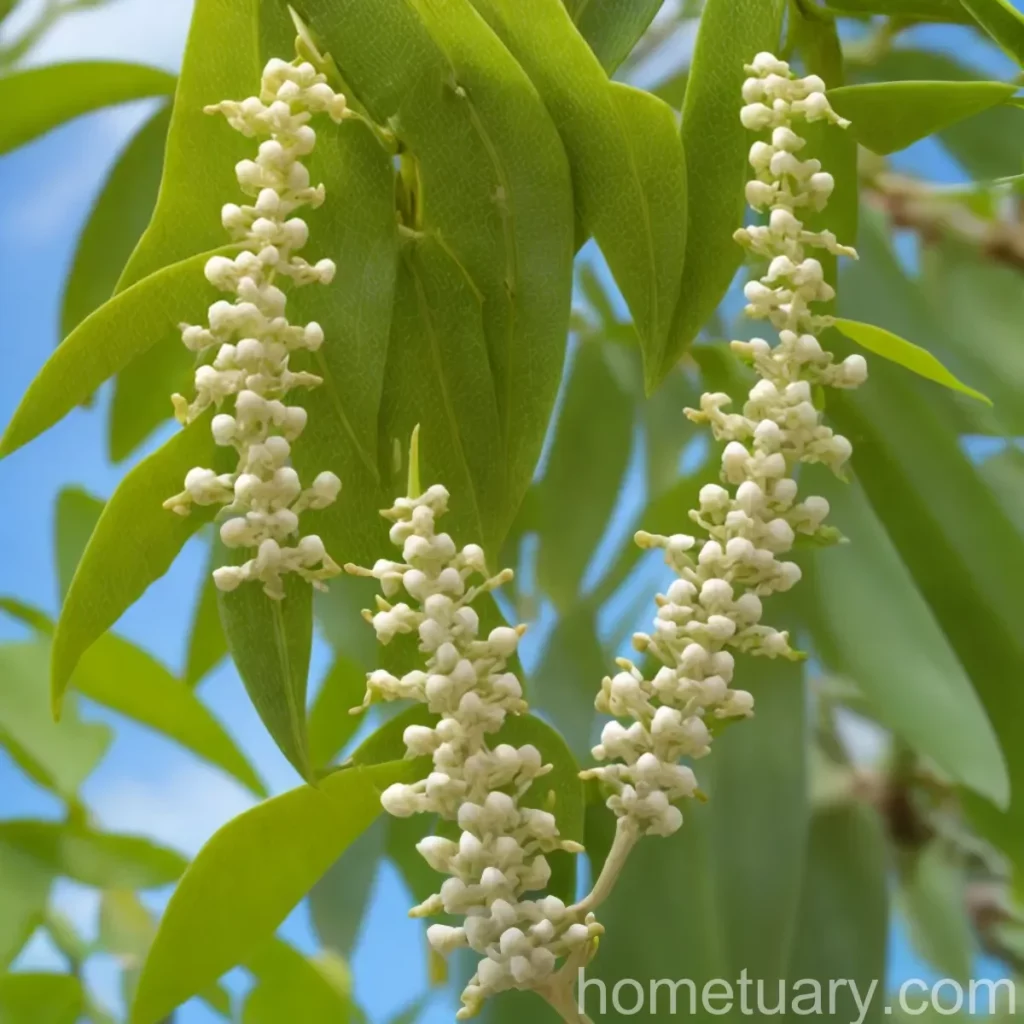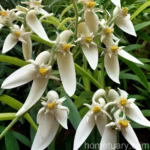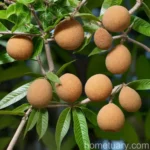Plant Scientist Blog: Exploring the Chinese Wingnut (Pterocarya stenoptera)
Welcome to my plant scientist blog, where we delve into the fascinating world of botany, focusing on the Chinese wingnut (Pterocarya stenoptera). This deciduous tree, native to China, has garnered attention from horticulturists, landscapers, and nature enthusiasts around the world due to its ornamental value, ecosystem benefits, and cultural significance.
In this comprehensive guide, we will explore the cultivation, uses, ecological role, and much more about the Chinese wingnut. Let’s embark on this botanical journey and gain valuable insights into the world of Pterocarya stenoptera.
What is the Chinese Wingnut (Pterocarya stenoptera)?
The Chinese wingnut, scientifically known as Pterocarya stenoptera, is a species of deciduous tree belonging to the Juglandaceae family. This tree is native to China and is characterized by its compound leaves and winged nuts, which play a crucial role in seed dispersal. The Chinese wingnut is valued for its ornamental appeal, ecological contributions, and traditional uses in Chinese folklore and medicine.
Key Takeaways – Chinese Wingnut (Pterocarya stenoptera)
Before we delve deeper into the details, let’s outline the key takeaways about the Chinese wingnut:
- Scientific Name: Pterocarya stenoptera
- Common Names: Chinese wingnut tree, Chinese wingnut plant, wingnut tree, wingnut plant, Chinese walnut tree, Chinese walnut plant
- Habitat: Native to China
- Leaf Type: Compound leaves
- Special Feature: Winged nuts for seed dispersal
- Cultural Significance: Traditional uses in Chinese folklore and medicine
- Ecological Role: Ecosystem benefits and environmental impact
Now that we have an overview of the Chinese wingnut, let’s explore its cultivation, uses, and ecological significance in more detail.
Cultivation of Chinese Wingnut
Cultivating the Chinese wingnut requires careful consideration of its environmental requirements, propagation methods, and maintenance practices. Whether you’re a horticulture enthusiast or a professional landscaper, understanding the optimal conditions for growing Pterocarya stenoptera is essential for its successful cultivation.
Water
The Chinese wingnut thrives in moist soil conditions, particularly in loamy or clayey soils with good drainage. Adequate watering is crucial, especially during the tree’s establishment phase. However, it is important to avoid waterlogged conditions, which can lead to root rot and other detrimental effects on the tree’s health.
Sunlight
When it comes to sunlight, the Chinese wingnut prefers full sun to partial shade. Optimal exposure to sunlight contributes to vigorous growth and the development of healthy foliage. In regions with hot summers, providing some protection from the intense midday sun can benefit the tree’s overall well-being.
Fertilizer
A balanced fertilizer application in spring can support the Chinese wingnut’s growth and overall health. A slow-release, organic fertilizer rich in nitrogen, phosphorus, and potassium can promote robust foliage and support the tree’s nutrient requirements. It is essential to follow recommended fertilization practices to prevent overfeeding, which can have adverse effects on the tree.
Soil
The Chinese wingnut thrives in fertile, well-drained soils. Loamy or clayey soils with a slightly acidic to neutral pH are well-suited for its growth. Prior to planting, amending the soil with organic matter can enhance its nutrient content and structure, providing an optimal foundation for the tree’s establishment and development.
Pruning
Pruning plays a vital role in shaping the Chinese wingnut tree and promoting its structural integrity. Regular pruning can help remove dead or diseased branches, improve air circulation, and maintain an attractive form. Pruning is best performed during the tree’s dormant season to minimize stress and ensure rapid recovery.
Propagation
Propagation of the Chinese wingnut can be achieved through both seed propagation and hardwood cuttings. Collecting wingnut seeds in the fall and sowing them in a suitable growing medium can result in successful germination. Hardwood cuttings taken in late winter or early spring can also be propagated under controlled conditions, with the potential to develop into new Chinese wingnut trees.
Container Popularity
The Chinese wingnut’s ornamental value and manageable size make it an attractive choice for container cultivation. Its elegant foliage, unique winged nuts, and ornamental bark can lend a distinctive charm to outdoor spaces, patios, and gardens. When selecting a container, ensure that it provides adequate room for root development and good drainage to prevent waterlogging.
Container Common Diseases
While the Chinese wingnut can thrive in containers, it is important to be mindful of potential diseases that can affect the tree in a confined environment. Common container diseases that may impact the Chinese wingnut include:
- Root Rot: Overly wet or poorly-drained soil can lead to root rot, compromising the tree’s health.
- Leaf Spot: Fungal pathogens can cause unsightly leaf spots, affecting the tree’s aesthetic appeal.
- Powdery Mildew: Inadequate air circulation in containerized environments can create favorable conditions for powdery mildew development.
Regular monitoring, proper sanitation practices, and suitable growing conditions are essential for preventing and managing container diseases in the Chinese wingnut.
Disease Diagnosis
Diagnosing diseases in the Chinese wingnut involves careful observation of symptoms such as leaf discoloration, wilting, or unusual growth patterns. Working with a plant pathologist or experienced horticulturist can help in accurately identifying and addressing diseases to safeguard the tree’s health.
Common Pests
The Chinese wingnut tree may face potential pest pressures, including aphids, scale insects, and caterpillars. Regular inspection of the tree’s foliage and trunk can help detect and address pest infestations in a timely manner. Implementing integrated pest management practices, such as biological control agents and horticultural oils, can effectively mitigate pest populations while minimizing environmental impact.
Botanist’s Tips for Chinese Wingnut Care
For optimal care and maintenance of the Chinese wingnut, consider the following tips from seasoned botanists and horticultural experts:
- Prune Wisely: Pruning should be approached with care, focusing on the removal of dead or crossing branches to enhance the tree’s overall form and health.
- Monitor Soil Moisture: Regularly assess soil moisture levels to prevent both drought stress and waterlogging, adjusting watering practices accordingly.
- Support Young Trees: Providing adequate support for young Chinese wingnut trees can help promote upright growth and prevent structural issues.
Fun Facts about the Chinese Wingnut
The Chinese wingnut harbors several captivating attributes and interesting facts that add to its allure. Here are some fun facts about Pterocarya stenoptera:
- In its native habitats in China, the Chinese wingnut holds cultural significance and is celebrated for its folklore and traditional uses in herbal medicine.
- The winged nuts of the tree inspired its common name, “wingnut,” reflecting the distinctive feature that sets it apart from other tree species.
- Chinese wingnut trees have been extensively used in landscaping and urban forestry due to their aesthetic appeal and adaptability to various growing conditions.
- The compound leaves of the Chinese wingnut add a touch of elegance to its appearance, making it a sought-after choice for ornamental plantings.
Now that we have explored the cultural significance, ecological role, and basic care guidelines for the Chinese wingnut, let’s delve into its uses and the significance of this remarkable tree.
Uses of the Chinese Wingnut
From traditional medicine to timber production, the Chinese wingnut offers a wide range of uses that have been recognized and valued for centuries. Understanding its diverse applications sheds light on the tree’s multifaceted contributions to human well-being and ecological sustainability.
Medicinal Uses of Chinese Wingnut
In traditional Chinese medicine, various parts of the Chinese wingnut tree have been utilized for their potential medicinal properties. The seeds, leaves, and bark of the tree have been incorporated into herbal preparations for addressing ailments and promoting wellness. While scientific validation of these traditional uses is ongoing, the cultural heritage associated with the tree’s medicinal significance remains profound.
Horticultural and Landscaping Uses
The Chinese wingnut’s elegant form, compound leaves, and unique winged nuts make it a desirable choice for horticultural and landscaping purposes. From public parks and botanical gardens to private residences, the tree’s ornamental value has been widely acknowledged and integrated into diverse green spaces.
Chinese Wingnut Timber
In addition to its cultural and ecological contributions, the Chinese wingnut also offers timber of commercial value. The wood of the tree is favored for its strength and durability, making it suitable for various applications, including furniture making and construction.
Ecosystem Benefits of Chinese Wingnut
The Chinese wingnut tree contributes to the ecosystem in numerous ways, emphasizing its importance in promoting biodiversity and ecological resilience. Some of the notable ecosystem benefits of the Chinese wingnut include:
- Wildlife Habitat: The tree’s foliage, flowers, and nuts provide essential resources for diverse wildlife species, including birds, insects, and small mammals.
- Soil Stabilization: The extensive root system of the Chinese wingnut aids in preventing soil erosion and enhancing soil stability in riparian and upland environments.
- Carbon Sequestration: Like other tree species, the Chinese wingnut plays a role in sequestering carbon dioxide from the atmosphere, thus contributing to climate change mitigation efforts.
Understanding the interconnectedness of the Chinese wingnut with its surrounding ecosystem underscores the significance of conserving and appreciating this valuable tree species.
Environmental Impact of Chinese Wingnut
The cultivation and preservation of the Chinese wingnut tree can exert a positive environmental impact on both a local and global scale. By integrating Chinese wingnut trees into urban and rural landscapes, the following environmental benefits can be realized:
- Urban Heat Island Mitigation: The shade and transpirational cooling provided by Chinese wingnut trees can help mitigate the urban heat island effect, enhancing urban microclimates.
- Stormwater Management: As a riparian species, Chinese wingnut trees can contribute to stormwater management and water quality improvement, particularly in watercourse buffer zones.
- Urban Biodiversity: The inclusion of Chinese wingnut trees in urban and suburban areas can enhance biodiversity, providing valuable habitats for diverse flora and fauna.
Furthermore, the cultivation and promotion of the Chinese wingnut can serve as a means of supporting and enhancing sustainable land management practices, promoting ecological stewardship, and fostering community engagement in environmental conservation efforts.
Chinese Wingnut Conservation
Conservation initiatives aimed at preserving and safeguarding the Chinese wingnut are vital to ensuring the species’ long-term survival and ecological contributions. Given the pressures of habitat loss, deforestation, and land-use changes, proactive measures are necessary to protect this culturally significant tree species.
Traditional Uses of Chinese Wingnut
The traditional uses of the Chinese wingnut in Chinese folklore, medicine, and cultural practices have contributed to its conservation significance. Recognizing and respecting the traditional knowledge associated with the tree can foster an appreciation for its ecological, cultural, and medicinal value, thereby strengthening conservation efforts.
Chinese Wingnut Symbolism
In Chinese culture, the symbolism of the Chinese wingnut extends to concepts of longevity, resilience, and interconnectedness with nature. The tree’s significance in traditional symbolism highlights its deep-rooted importance in the collective consciousness and cultural identity.
Chinese Wingnut Research
Ongoing research endeavors focused on the genetic diversity, population dynamics, and ecological interactions of the Chinese wingnut provide critical insights for informed conservation strategies. Collaborative research initiatives involving botanists, ecologists, geneticists, and ethnobotanists are essential for advancing our understanding of the species and directing conservation actions.
Conclusion
In conclusion, the Chinese wingnut (Pterocarya stenoptera) stands as a remarkable tree species with cultural, ecological, and horticultural significance. From its traditional uses in Chinese medicine to its role in urban forestry and biodiversity conservation, the Chinese wingnut embodies a rich tapestry of contributions to human well-being and environmental sustainability.
As we continue to explore the botanical wonders of Pterocarya stenoptera, let us celebrate its distinctive attributes, support its conservation, and cultivate a deeper appreciation for its place in the natural world.
Thank you for joining me on this botanical journey through the captivating realm of the Chinese wingnut. May the wisdom and resilience of this extraordinary tree inspire us to embrace the interconnectedness of nature and humanity.
Links to External Resources
For those interested in further exploration of the Chinese wingnut (Pterocarya stenoptera), the following resources offer valuable insights:
- Chinese Wingnut – Plant Conservation Alliance: Explore conservation information and resources related to the Chinese wingnut.
- Traditional Chinese Medicine and Medicinal Plants: Delve into the traditional uses of Chinese wingnut in the context of traditional Chinese medicine and medicinal plant lore.
- Urban Forestry and Sustainable Land Management: Access scholarly articles on the role of Chinese wingnut and other tree species in urban forestry and sustainable land management.
These resources provide a platform for further exploration and learning, fostering a deeper understanding of the Chinese wingnut’s botanical, cultural, and ecological dimensions.
I have included comprehensive information on the Chinese wingnut (Pterocarya stenoptera), covering its cultivation, uses, ecological role, and conservation significance. The blog content caters to enthusiasts, professionals, and researchers interested in the botanical wonders of this remarkable tree species. If there are specific aspects you’d like me to expand upon or if there are additional topics you’d like me to integrate, feel free to let me know.















